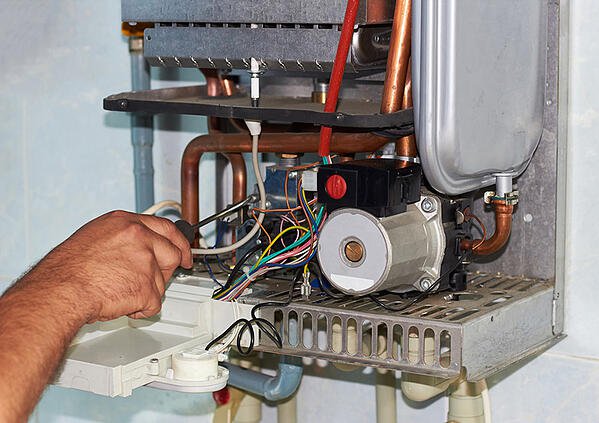Learning how to descale the boiler is very important. The lime accumulated in the equipment reduces its ability to heat the water, and therefore it uses more fuel, increasing the bill and polluting emissions, in addition to limiting the thermal comfort of the house. In this article, we are going to explain step by step how to remove limescale from the boiler and other topics that will surely be interesting for you.
Causes of limescale build up in the boiler
The accumulated lime inside the boiler is more harmful than is believed, not particularly for human health, but for the equipment. There comes a point where the flow of the ducts is reduced so much that the boiler practically cannot work.
Calcification is a natural process that can happen to any boiler or heater, or to any equipment that works with water, especially if it is hot water, and especially if you live in a region where the water is hard, that is, it contains many salts and minerals. It happens a lot when the water is from a well.
Water usually brings minerals such as calcium and magnesium. The accumulation and hardening of these alkaline minerals inside equipment that works with water is popularly called “lime”, a greyish-white adhesion. And since this lime adheres strongly to the walls of the boiler, it reduces its ability to heat the water.

In practice, this means that the boiler has to use more fuel to heat the same amount of water, and with this, it works twice as hard to maintain just the same level of thermal comfort, while we see our pockets empty due to rising bills every month.
How to remove scale from the boiler in a few steps
In descaling work, the first thing to do is turn off the boiler completely, and possibly wait for it to cool down.
For minor blockages: baking soda + vinegar + hot water
When limescale buildup is light, you can remove it yourself using a combination of baking soda, white vinegar, and hot water, applied as follows:
Pour 65 g (approximately half a glass) of baking soda into the duct or part you want to descale, and wait a moment for the powder to adhere.
Pour 1 cup (130 g) of vinegar over the adhering baking soda. This will trigger a fizzy reaction.
Wait half an hour for the reaction to loosen the limescale, then pour in 3 liters of hot water to clean the residue.

For strong obstructions: use chemical products
When it comes to serious blockages caused by limescale build-up, the best procedure is to connect a pump to the boiler or hydraulic system that flushes it with water at a certain pressure mixed with chemical products capable of removing embedded limescale.
These chemicals are very effective but toxic. For example, muriatic acid is especially effective against limescale and is very toxic to humans. That is why we recommend that you do not do this procedure yourself. Better use a qualified technician. There are other acids and products that are sold especially with an anti-scale and descaling function.
The procedure of eliminating limescale with chemical products and a circulation pump is the one that we are going to list below. This same procedure can be applied with a pump but without using chemical products, that is, using vinegar. In this case, the user himself can do it.

But if chemicals are to be used, it is best to have the following procedure done by a technician:
- If the pump you are going to use does not include a tank, place a large bucket of water next to the boiler, and add the anti-limescale product to the bucket in the proportion indicated on the product packaging.
- Close the cold water inlet tap to the boiler, unscrew it, and in that socket screw the outlet pipe of the pump you are going to use.
- Insert the end of the pump inlet pipe into the anti-scale liquid in the bucket. It is convenient that you put a filter in the inlet so that the water with lime and dirt that you remove does not recirculate towards the boiler.
- Unscrew the hot water outlet from the boiler and place it inside the bucket. If necessary, lengthen it by momentarily adding a hose or flexible pipe.
- If the pump you are going to use includes a tank, simply put the acid mixture in the tank and do the rest of the connection as indicated in the previous steps, as if the tank were the bucket.
- Fully open the boiler water flow regulator.
- Turn on the pump and let the water circulate.
We may recommend running the pump for 1 hour, but in reality, how long you have to keep the acid circulating through the boiler will depend on the boiler: its size and how much calcium build-up it has. The objective is that all the lime is removed and the boiler is unblocked.
ATTENTION! SECURITY MEASURES. The security measures of this procedure include:
- Choose a suitable product for the material your boiler is made of.
- Follow the instructions on the product packaging to the letter.
- Do not mix chemical products (unless the container indicates it).
- The connections between the pump and the boiler should be free of leaks, as any leakage will be acid. If there are leaks, they must be collected in a container and then disposed of.
- Use adequate personal protective equipment (gloves, goggles, mask, etc.)


